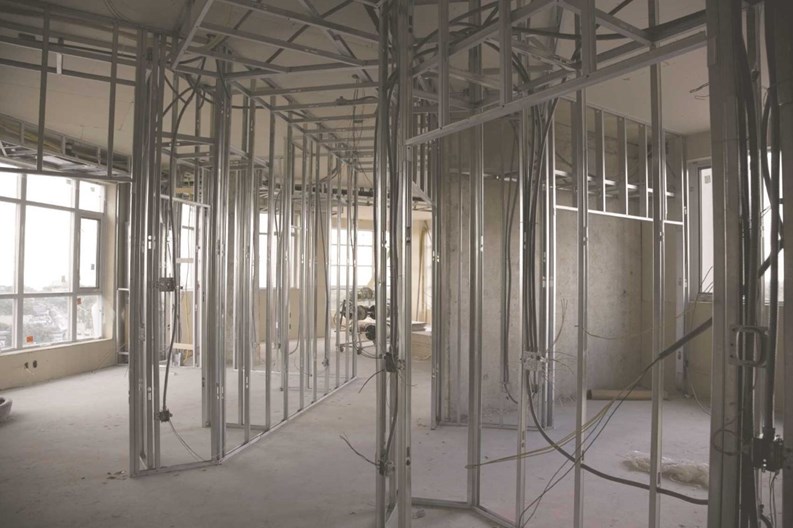Living in a community sometimes requires a bit of flexibility, and that’s especially true when a large construction project is happening. Usually, whether it’s a facade restoration, lobby redesign, or a heating/ventilation upgrade, most building construction projects go pretty smoothly. However, problems with noise, dust, or disruptions in building services are commonplace and to be expected with some construction projects. And if residents have been informed of the possible inconveniences ahead of time, a nasty resident backlash usually can be avoided.
But sometimes, things just go badly with a project. Projects stretch out for months longer than anticipated, contractor crews damage property, elevators are shut down or other problems emerge, and people get tense. When a project starts causing more problems than it’s fixing, usually the building’s manager does the damage control and gets things back on track. But it’s the responsibility of the manager and the board to deal with the aftermath of a difficult or disastrous project.
Common Project Headaches
Perhaps the most common problem that a board will run into with a major renovation project is cost overruns—when the contractor exceeds the budget and asks the board for more money. Such overruns can be foreseen or unforeseen, says Stephen Elbaz, president of Esquire Management Corp., a Brooklyn-based property management company. “A plumbing job might end up taking more time and money because of rotted pipes. Sometimes, [the board] runs out of money for the project in the middle of the project,” Elbaz says.
A less common problem that can happen with a large project is the contractor’s surprise—when a chunk of undiscovered work is uncovered while working on the project. Sometimes what the contractor uncovers can be hazardous, and therefore, costly to fix. Asbestos and lead, which always require abatement, are two of the worst surprises. They are a couple of the nastiest problems a contractor can encounter on a project, Elbaz says.
“A contractor might discover midway through the job that there’s a room they didn’t know about,” Elbaz says. “Sometimes, especially with mold, [that new factor] can drive the cost of the project up. A bid that was $20,000 two months prior will increase by $5,000 because of the growth of mold [in the project area] during that time.”
Because of the potential for contractors’ surprises on large projects and the possibility of the contractor simply performing the work incorrectly, property mangers say that it’s important to have a professional monitor the work. Board members don’t have the time or expertise to monitor a large construction project going on in their building, and even if they did, they’d be better off putting the responsibility in the hands of a professional such as an engineer, who is licensed and insured to do the work. Failure to do so could be disastrous, and expensive.
Mark Levine, vice president of Excel Bradshaw Management Group in Carle Place, got a call one Friday evening at 5 p.m. from a property where contractors were doing a roof replacement.
“They chose not to have an engineer or consultant oversee the work… The roofer was using a torch to heat the tar, and I got a call that the roof was on fire,” Levine explains, noting that the roof was 80 percent done when it caught fire. “For the next two weeks, we worked on getting the place fixed, taking care of water damage, etc.”
The burned building was a 78-unit structure that was senior citizen housing. The fire did $150,000 in damage. It all would have been avoided if a competent professional had been overseeing the work, Levine says.
In addition to being competent and dependable, a contractor must also be licensed and insured, if a property owner hopes to have a project go smoothly, says Michael Cervelli, president of Cervelli Management Corp., in North Bergen, New Jersey. One job his company was called in to help with had been a nightmare for the owner. The construction project had been done 13 years before, and the contractor didn’t install the footings correctly, he explains.
“In some of the units, cracks in the walls were an inch wide, and windows and doors wouldn’t open. We had to jack the buildings up, put new pilings in and fix the buildings with people living in them,” Cervelli says. “The contractor stopped working on the project, and we quickly got very aggressive with them, so they came back and finished the work. You can get that done if you have it in the contract.”
It is better to have the right people involved with the job from the start, experts say.
“What we advise our clients to do is hire somebody who is an engineer or consultant to create specs for the job,” Levine says, adding that it’s important to have a professional oversee the work, as well. One of the most important professionals to have involved with the job is the property manager.
The Manager (and Board’s Burden)
Minding your Ps and Qs on a large project means getting the correct details of the work in writing, well before the dust starts to fly. The first document that must be correctly drafted is the job specifications—that is, the specifications by which the job is to be done. An engineer usually creates the document, since he or she understands how the project should be done. The specs will detail what work should be done and what materials will be used—and contractors will bid on the job based on this information.
“When we do a project, we make sure the specifications are clearly defined, and you call in a few qualified, licensed contractors. You check out the bids, and you make sure the contractors have a good history,” Cervelli says. “And you work with the engineer to make sure the contractor does the job correctly.”
Part of the process for ensuring that the contractor does the job correctly is also getting that process in writing. You first have to create a set of bid documents, from which payments will be made to protect the building,” Elbaz advises. “Have the contractor get a check for materials on the day the materials will show up. On a $250,000 roofing job, the contractor will get the materials delivered in intervals.”
A property manager’s responsibility for a construction project on the property depends sometimes on the type of work that is being done. If elevators are being replaced, a manager may have no responsibility at all for the progress of the work, since a property manager usually isn’t also an elevator expert. Other jobs will require a more hands-on approach by managers.
“For a façade improvement job, we’re always meeting with contractors, to make sure they’re hitting their goals,” Levine says. “A lot of it is communication with the contractors.”
Communicating effectively with contractors starts with drafting the contract for the work, and ensuring in the contract that the work is done correctly and on schedule. But how do you manage to see that the contractor follows through with the job? Many property managers advise the carrot-and-stick approach.
Scheduling with Cash Assurance
Property managers and board members should take a proactive approach to the scheduling of a project. It is important to choose milestones for the project, or to have a fixed schedule for it, Elbaz says.
“Make sure the money always stays ahead of the work. Never give an advance deposit,” he says. “Have at least 10 percent to 20 percent of the contractor’s fee for the project until the end of the job, to make sure that the job was done right and that there are no damages.”
Strictly wording schedule restrictions in the contract can also help ensure that the contractor completes the job in a timely manner. “It’s always good to put a clause in the contract, with penalties related to scheduling,” Levine says. “That way if the job is grossly behind schedule, the contractor can be fined.”
Cervelli suggests that a property owner make sure the contractor gets bonding for larger jobs. He warns not to pay a contractor too much cash at one time. Typically, for a $25,000 project, for example, a contractor will be given about $8,000 up front. Halfway or two-thirds of the way through the work, the contractor is paid another $8,000, Cervelli explains.
“At the end of the job, make sure the job’s done right, then pay the remainder,” he says. “If it’s not done right, keep holding the money until they fix the screw-ups.”
Levine suggests that the property owner always holds onto a retainer fee of at least 10 percent of the contractor’s total fee, as a way to reconcile discrepancies quickly at the end of a job.
“That way at the end of the project, if some of the work is not done right, holding that money is a great motivational tool to make sure the job is done right,” he says.
Smoothing Things Out
If a project has been particularly difficult, and if residents have suffered through numerous inconveniences or contractors have had a lot of problems, the property manager must do damage control. The property manager may be called upon to be both mediator and whipping boy.
“Many times the manager has to act as a punching bag when relations become strained between the board and the contractor,” Elbaz says. “A lot of times, some coffee and donuts and some venting will be all that’s necessary to get a project back on track. Always be up-front and honest with a contractor, and ask him to help you work out your problems.”
If there has been a problem with the contractor’s performance, such as when property is damaged in the midst of work on a project, the manager must notify insurance companies immediately about the damage, Elbaz advises.
“Failure to notify the building’s insurance company and the contractor’s insurance company and the contractor, gives insurance companies an out to deny coverage of the claim,” he says. “Often, they require notification within 30 days.”
Keeping people aware of what’s happening with the project is key, Levine says.
“It helps to have a general meeting regarding the project,” he says. “We’ve had meetings where we’ve shown the drawings of the project… The communication factor is one thing a lot of people miss.”
Jonathan Barnes is a freelance writer and a frequent contributor to The Cooperator and other publications.







Comments
Leave a Comment